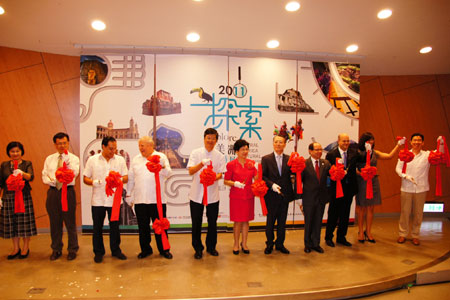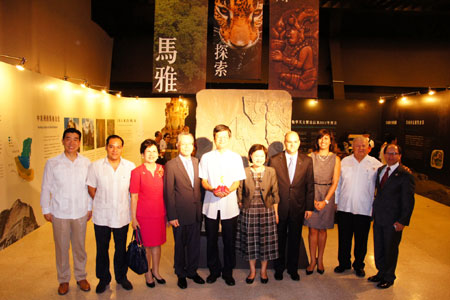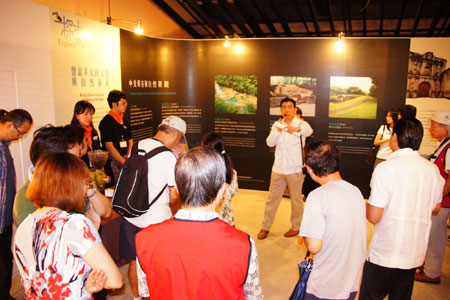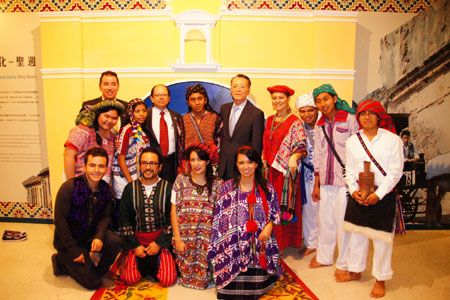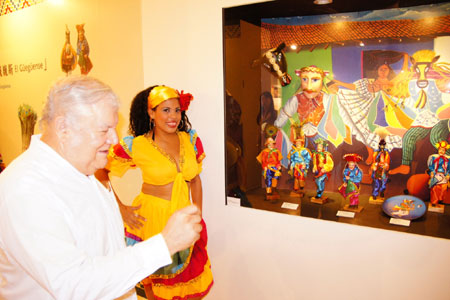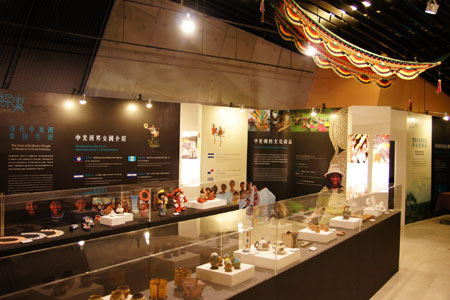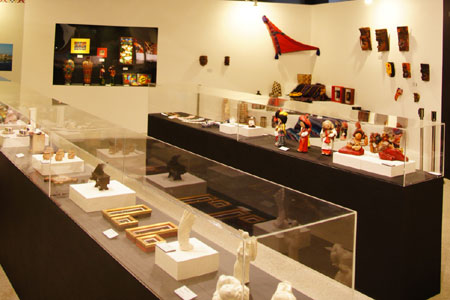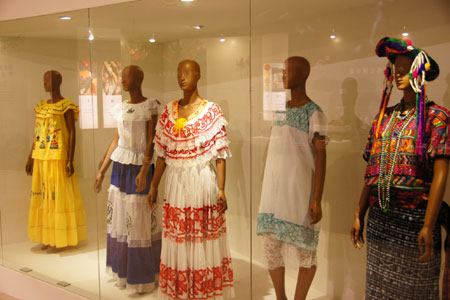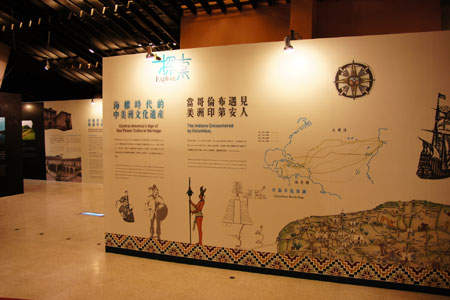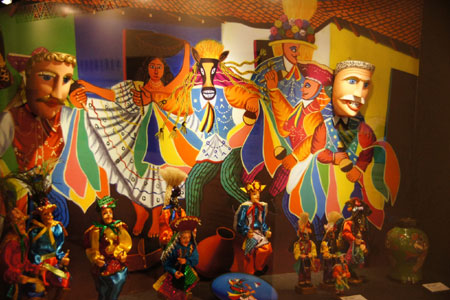Central America cultural exhibition in SHIHSANHANG Museum of Archaeology
2011-09-15
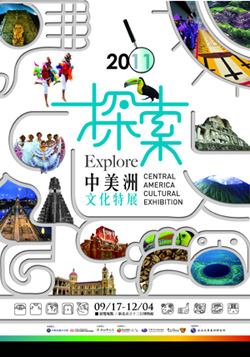
Our diplomatic center - Central America, is a colorful, exotic and beautiful natural wonderland, dark green rainforests and mountains, volcanic and colorful lakes, on the shores of two oceans, with the European colonial influence and deeply rooted Mayan culture, full of Latin passion in its style and bold colors are seen in handicrafts and cultural and creative industries.
In order to promote international cultural exchange, archaeological research development and extension education services, the "cultural exhibition in Central America" is thus especially organized with the Shihsanhang Museum of New Taipei City. This special exhibition will take cultural products from our diplomatic allies in Central America: Belize, Guatemala, Honduras, El Salvador, Nicaragua and Panama. Through the multi-display techniques to explore the Mayan cultural sites in tropical jungles of Central America, recalling the era of the Spanish sea power heritage, as well as the contemporary Central America, a rich and diverse life style of ordinary people, showing the Central American cultural characteristics of each period, introduced to the public its uniqueness, and to respond to UNESCO´s " World Cultural and Natural Heritage Protection Convention". You are invited to make a contribution to safeguard the world's diverse cultural and natural heritage.
The exhibition will be divided into the following topics: a history tour through the closely knitted Mayan culture in Central America, as well as the trajectory of modern life, so the people of Taiwan can be more familiar with Central America, a place full of valuable cultural assets!
● Cultural heritage in the tropical rain forest
2000 BC - AD 1525 the Mayan culture before the Spanish rule, one of the world's five ancient civilizations, the Mayan people lived in the central areas of Central America, across Mexico, Belize, Guatemala, Honduras and El Salvador in some areas, after a century and more by archaeological excavation and research, these Mayan ruins have become an important cultural tourism resource for Central American countries. Through these archaeological excavations and research sites, we are now able to gradually unveil the mysterious Mayan civilization.
● Sea power and the cultural heritage of Central America
In 12 October 1492 AD, Columbus arrived in the Waterlings Island in the Bahamas, he mistakenly thought himself arriving in India, so he named the local residents Indians. This is the origin of "Indian". After Columbus, the Spaniards ruled the whole Central America, establishing the political central and military defense fortresses, also brought the Catholic Religion, adding a new cultural element in Central America.
● Everyday life in modern Central America
Central America is at East to Atlantic Ocean, West to Pacific, North to Mexico border, and South to the Isthmus of Panama and South America, located strategically, it has a rich and diverse cultural and natural heritage, its rich agricultural produce and raw materials are of important position in the world. Many countries have formal diplomatic relations with the Republic of China-Taiwan, they are our allies in economic and trade relations, international conferences or culture and tourism. Through the in-depth understanding of Central American countries, we can all get closer.
● Rich and diverse cultural and natural assets
Since the US and UK archaeologists, Stephens and Wood started their study of the Mayan civilization in 1839, more than a century later, thousands of Mayan ruins have been found in the tropical rainforest. Due to constant human tree cutting, volcanoes, typhoons, earthquakes, and El Niño, the tropical rain forests and historic buildings are severely damaged. Hoping that through this exhibition, our people can start supporting the United Nations' “World Cultural and Natural Heritage Protection Convention, " so that this natural and cultural heritage can be preserved.
Exhibition dates: 2011/09/17 ~ 2011/12/04
Opening hours: Monday through Sunday, 09:30 am to 05:00 pm
Exhibition Location: Shihsanhang Museum of New Taipei City (No 200, Museum Road, Bali District, New Taipei City)
Entrance fee: Free admission
